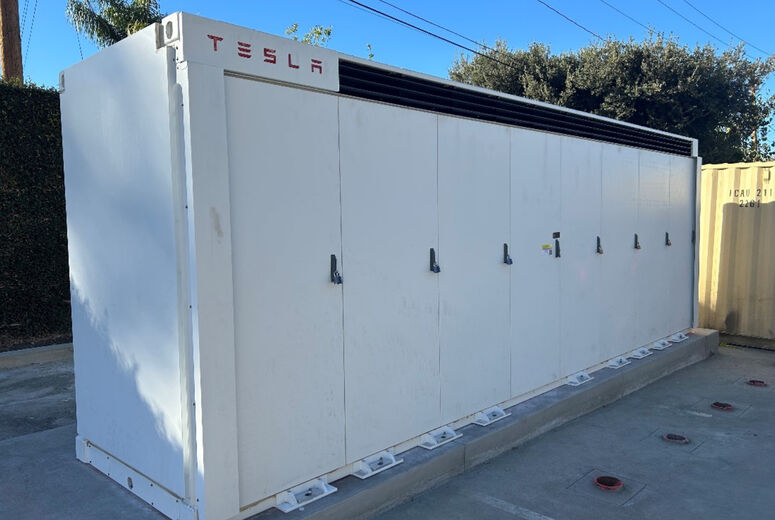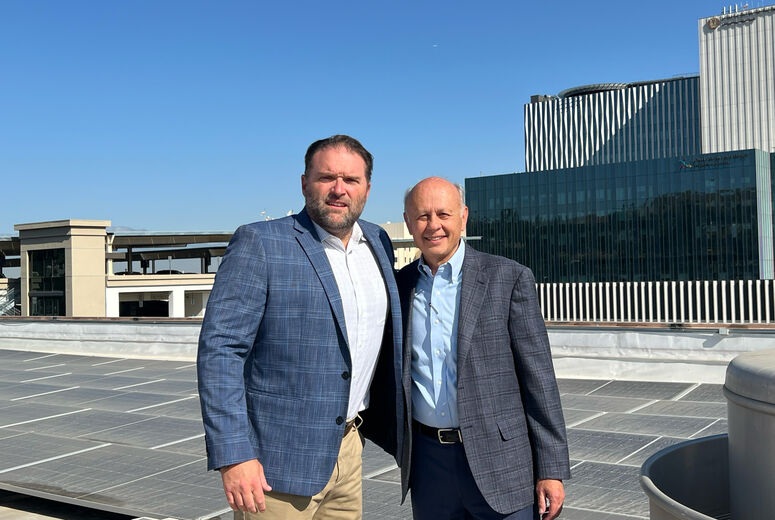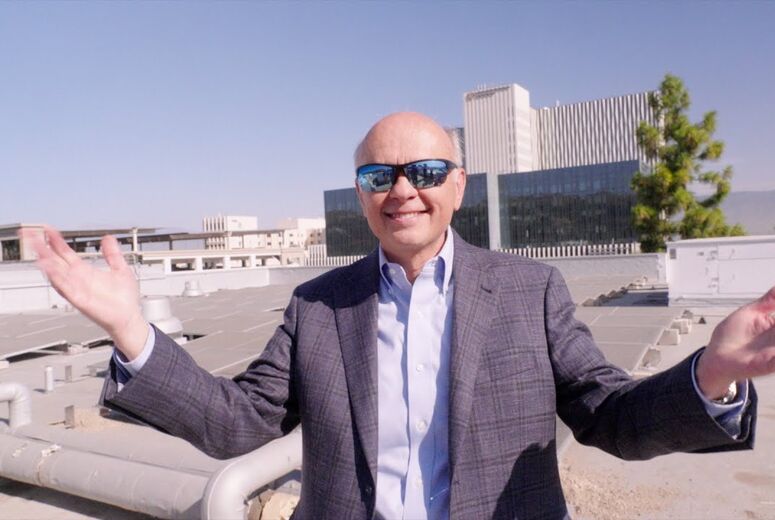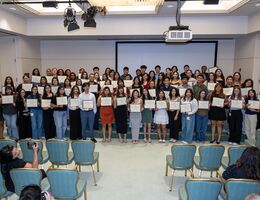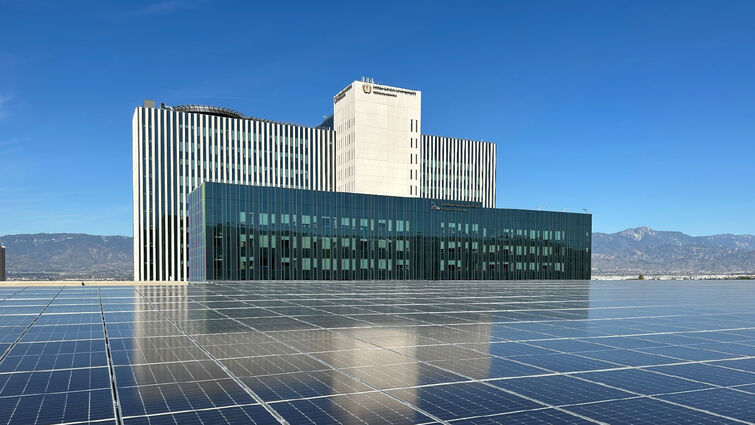
New solar panel array will provide power to Faculty Medical Clinics office building.
A renewable microgrid energy system is now supporting the electricity needs of Loma Linda University Faculty Medical Clinics (FMC). The new system generates two megawatts of clean, reliable solar energy onsite, and includes a battery storage system. Fully operational since August 22, the project delivers significant energy cost savings and operating resilience while also reducing the FMC’s power-related environmental impact.
The new system comes online after three years of planning and 18 months of construction. Power is generated by 3,622 solar panels installed on the top level of the P4 parking garage and above the ground-level physician parking, providing shaded parking. A 1-megawatt Tesla battery on the building’s south side stores excess power and can provide six hours of emergency back-up power. The system also supports 10 electric vehicle charging stations located on the FMC’s west side parking lot. Renewable Energy Partners (REP) of Corona, CA, who built the array will also facilitate its maintenance going forward.
FMC operations use an average of 1.7 megawatts of electricity per day, with usage reaching more than 2 megawatts during the peak summer months. The microgrid will provide 87 percent of the necessary power during peak needs, with the remainder purchased from Southern California Edison.
Cost savings with the microgrid system are achieved as the FMC more efficiently manages its energy source, allowing for more precise budget planning for energy costs in both the short and long term. The current baseline cost for power purchased from Southern California Edison is 17 cents per kilowatt hour, rising to 24 cents at peak times. The FMC has contracted with the microgrid’s supplying company to pay 15 cents per hour for the next 30 years. At current rates, the FMC will achieve $500,000 in annual savings. With power projected to reach 30 cents per kilowatt hour during the contract, annual savings could reach as much as $1.5 million.
“Our solar panel infrastructure strengthens our ability to care for the community, even during emergencies,” said Ricardo Peverini, president of the Loma Linda University Faculty Medical Group. “It reduces our environmental footprint, makes our operations more resilient, and saves resources that we can reinvest into patient care. It’s a healthier future for our patients, our staff, and our region.”

